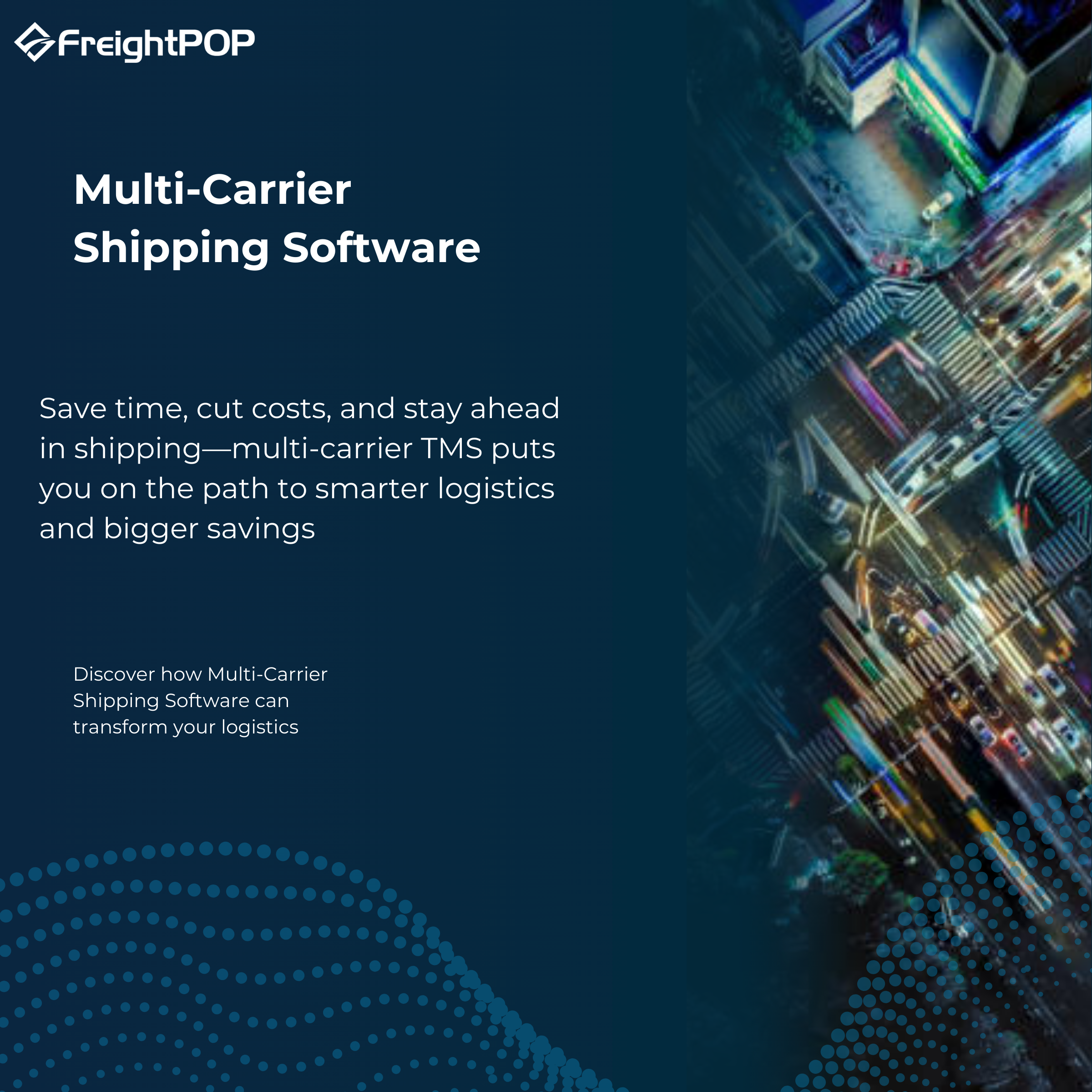The market for multi-carrier shipping software is growing rapidly, projected to expand from $2.4 billion in 2023 to $4.3 billion by 2033, with a CAGR (Compound Annual Growth Rate) of 12.6%. This growth underscores the increasing demand for real-time shipment tracking and streamlined operations. By adopting multi-carrier shipping software, businesses can enhance operational efficiency, reduce costs, adapt to market changes, and minimize delays.
This growth reflects a growing demand for integrated software tools that enable real-time shipment tracking, improve operational efficiency, and reduce costs. Multi-carrier shipping software offers a strategic solution by helping businesses adapt to market changes and overcome logistical challenges.
What is Multi-Carrier Shipping Software?
Multi-carrier shipping software is a platform that enables businesses to connect and interact with multiple shipping carriers—such as FedEx, UPS, DHL, and regional providers—through a single interface. By doing so, companies can compare rates, transit times, and carrier performance to select the most cost-effective and reliable options for their shipments.
Beyond rate comparisons, this software centralizes shipping operations, automating processes like label generation, booking, and tracking. Businesses gain enhanced visibility, allowing them to monitor shipments in real-time and address potential delays proactively. This combination of features saves time, reduces errors, and simplifies complex logistics workflows.
The Benefits of Multi-Carrier Shipping Software
Improved Decision-Making: Data is the backbone of effective logistics management. Multi-carrier shipping software provides robust analytics and reporting tools that allow businesses to monitor shipping performance, track costs, and identify trends.
By analyzing transit times, carrier reliability, and shipping costs, companies can make informed decisions that drive continuous improvement. Advanced features like performance metrics tracking enable users to evaluate carrier performance and ensure optimal trade lane management.
2. Enhanced Operational Efficiency and Cost Savings: Automation is a game-changer in logistics. Multi-carrier shipping software reduces manual errors and streamlines booking processes by automating rate comparisons and pricing calculations.
Rate benchmarking tools provide businesses with insights into market rates, enabling them to negotiate better terms with carriers. Real-time freight index data helps companies avoid overpaying for services, leading to significant cost savings.
3. Greater Flexibility and Expanded Carrier Options: Reliance on a single carrier can be risky, especially during disruptions or delays. Multi-carrier shipping software offers access to a diverse carrier network, enabling businesses to switch providers based on performance, cost, or availability.
4. Proactive Risk Management: Diversifying carrier options mitigates risks associated with over-reliance on a single provider. Multi-carrier shipping software offers advanced tracking features and real-time alerts, enabling businesses to proactively address potential delays or disruptions.
5. End-to-End Rate Visibility: Transparency is vital in managing shipping costs effectively. Multi-carrier shipping software provides detailed rate breakdowns, including first-mile, middle-mile, and last-mile segments, ensuring businesses have full visibility over their shipping expenses.
6. Adapting to E-Commerce Growth: The rise of e-commerce has heightened customer expectations for fast, reliable deliveries. Multi-carrier shipping software helps businesses fulfill orders quickly by providing access to a wide range of carriers.
7. Time Savings: Manual rate comparisons and juggling multiple systems can drain valuable time. Multi-carrier shipping software automates these processes, allowing businesses to focus on strategic activities rather than administrative tasks.
8. Maximizing Customer Satisfaction: Customer satisfaction hinges on timely deliveries and cost-effective shipping. By leveraging multi-carrier shipping software, businesses can meet these demands while maintaining transparency and efficiency.
Conclusion
Multi-carrier shipping software is more than just a tool—it’s a vital asset for businesses navigating the complexities of modern logistics. By improving efficiency, reducing costs, and enhancing customer satisfaction, it empowers businesses to remain competitive in an ever-evolving market. To read tips on how to choose the best multi-carrier software check out this blog from one of our partners, EasyPost.
Whether you’re looking to scale your operations, meet growing e-commerce demands, or simply gain greater control over your shipping process, a multi-carrier TMS can make it happen. Ready to unlock the full potential of your logistics operations? Request a FreightPOP demo today.





